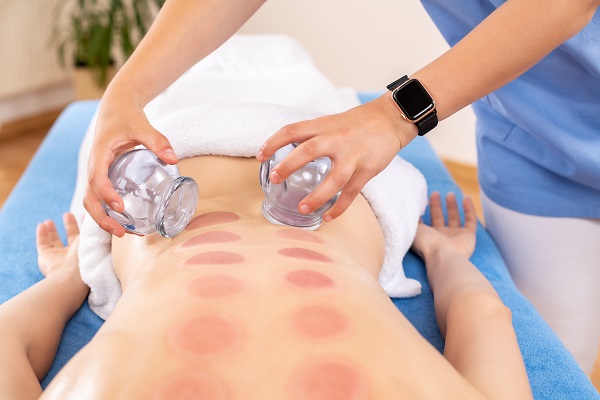
Image Source: Google
If you are looking for a unique and effective way to reduce muscle tension, improve circulation, and promote overall relaxation, cupping massage might be just what you need. This ancient practice has gained popularity in recent years for its numerous health benefits and soothing effects on the mind and body. In this ultimate guide to cupping massage, we will explore how it works, its origins, the different types of cupping techniques, and why you should consider trying it for yourself. Refer: https://fourseasonsbodywork.buildmassage.com/.
So, how does cupping massage work? The practice involves placing cups on the skin to create a vacuum effect, which helps to lift and separate the layers of tissue underneath. This suction encourages blood flow to the area, bringing fresh oxygen and nutrients to the muscles and promoting the release of tension and toxins. The cups can be left in place for a few minutes or moved around in a gliding motion to provide a deep tissue massage. The sensation of cupping is often described as a gentle pulling or stretching sensation, which can be quite relaxing for many people.
Cupping massage has been used for centuries in traditional Chinese medicine as a way to balance the body’s energy flow, or Qi, and promote healing. The technique is based on the belief that stagnation or blockages in the body’s energy pathways can lead to pain, illness, and stress. By creating suction with the cups, cupping massage aims to release these blockages and restore the body’s natural flow of energy. In addition to its physical benefits, cupping massage is also believed to have a calming effect on the mind, helping to reduce anxiety and promote a sense of well-being.
Several different types of cupping techniques can be used during a massage session. The most common method is known as “dry cupping,” which involves placing cups on the skin and creating a vacuum with heat or a pump. This form of cupping can leave circular marks on the skin, known as “cupping marks,” which typically fade within a few days. Another popular technique is “wet cupping,” which involves making small incisions on the skin before applying the cups to draw out small amounts of blood. This method is believed to have detoxifying effects and is often used to treat specific health conditions.
So, why should you consider trying cupping massage? One of the main benefits of this ancient practice is its ability to relieve muscle tension and pain. By increasing blood flow to the muscles and promoting the release of toxins, cupping massage can help to reduce soreness, stiffness, and inflammation. This makes it an excellent treatment option for athletes, people with chronic pain conditions, or anyone looking to improve their overall well-being.
In addition to its physical benefits, cupping massage can also have a positive impact on your mental health. The deep relaxation and calming effects of cupping can help to reduce stress, anxiety, and tension in both the body and mind. Many people find that a cupping massage session not only rejuvenates their muscles but also provides a much-needed mental break from the demands of everyday life.
Overall, cupping massage is a safe and effective way to promote relaxation, reduce muscle tension, and improve overall well-being. Whether you are looking to alleviate pain, release stress, or simply try something new, cupping massage is worth a try. So why not book a session with a qualified therapist and experience the benefits of this ancient healing practice for yourself?
In conclusion, cupping massage is a time-tested technique that offers a wide range of health benefits for both the body and mind. By improving circulation, releasing tension, and promoting relaxation, cupping massage can help you feel better physically and emotionally. So, if you are looking for a natural and holistic way to improve your well-being, consider giving cupping massage a try. You may be pleasantly surprised by the results!
